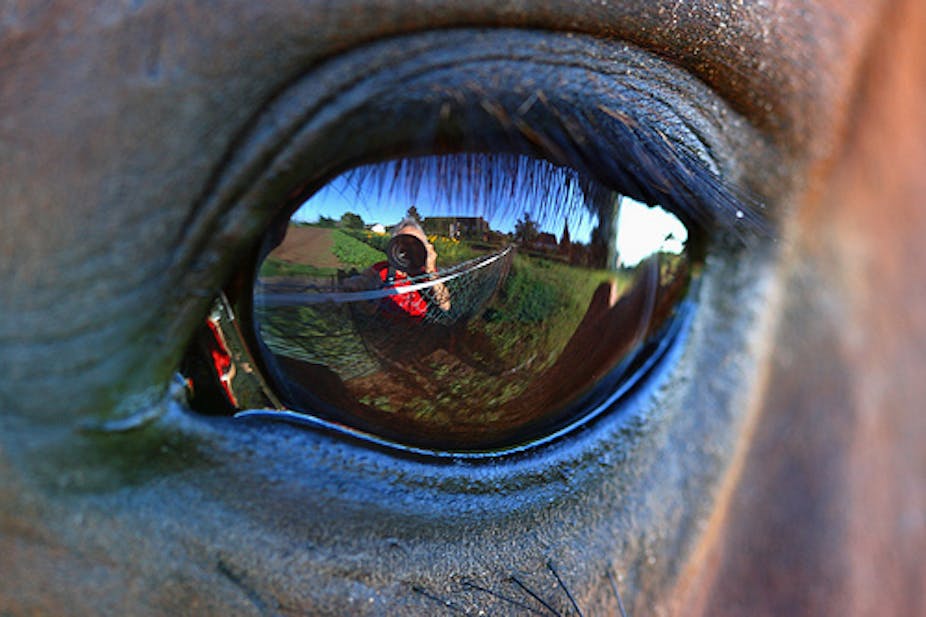Environment and energy stories topped the charts as The Conversation’s best-read articles of any section in our first year. Hundreds of thousands of TC readers read and argued about humanity’s often difficult relationship with our planet.
This troubled pairing is the genesis of much – if not almost all - of what we are, what we have made, and what we have done. In discussing our path from being bands of families struggling to survive the elements, animals, and each other, through to forming the vast and vastly engineered civilisations of modern times, Sigmund Freud wrote than man had become “a kind of prosthetic God”.

“Everything which can assist in the exploitation of the earth by man and in his protection against the forces of nature – everything, in short, which is of use to him – is attended to and effectively carried out,” wrote Freud. He listed our controlling the flow of rivers, digging up and converting minerals, communicating across distances, exterminating dangerous animals, and breeding the beasts we want.
Yet, despite largely taming the wilderness that had sparked us to create so much – even religion – Freud wrote (in 1929) that “present-day man does not feel happy in his Godlike character”. Jumping ahead 83 years, it seems that for all our mastery, the earth’s privileged certainly have more convenience, but do we have more happiness? And as huge numbers of species die out, the wilderness recedes, and our population swarms from one additional billion to the next, the godlike powers Freud wrote of – our scientific prowess – have become a curse in the eyes of many.

One narrative could be that our perception of nature has changed, from viewing it as a supreme power demanding awe and appeasement, through being something to be conquered, to today’s climate-change-fuelled views of it as a wounded beast turning on its tormentors. All these strains of thought commingle in the sciences as well as in industry and culture. And as the online threshing house for the prosthetic gods, TC’s Environment + Energy section has published scores and scores of very well-read articles exploring these strains in depth.
One hundred and eighty thousand people read Professor Mike Archer throwing a curly one at champions of vegetarian living by arguing that crop production is worse for the Australian ecosystem than grazing livestock, and is a far more savage affair than people care to consider. He kindly helped the reader picture this casual cruelty by explaining how baby mice orphaned by grain-protecting pesticides sing for their dead mothers until they too die, helpless and alone.

On a different note, Dr Ashley Franks drew tens of thousands of readers with his tale of how electricity can be generated from mud and how bacteria can extract toxins from the soil.
And I seem to remember some stuff about climate change. Articles making broad statements saying that anthropogenic climate change is real were wildly popular, even more so than the still very-well read but more focused discussions of solar cycles, ocean temperatures, and other aspects of climate-related science.
So what’s ahead in year two of Environment + Energy? Our proposal for an online sandpit for climate change brawls was turned down by management, so instead we’ll be pressing commenters to play the science not the scientist.

More broadly, we will seek to cut through politics and cant to bring the reader a rich stream of logical and evidence-based arguments about the natural world’s collision with us and our armament of godlike prosthetics - surely the great story of our times, and the deeper history of all human times.
Under the microscope will go new, old, and rival technologies, new, old, and rival policies, new, old, and rival thinking - always with an eye to separate realism from rhetoric. What is really happening on earth? What are the facts of coal seam gas extraction, and what are the facts not just in one basin that lies at a certain depth but in other configurations? We will chase every story with precision and objectivity, wherever possible acknowledging the unknown as much as the known.

We will examine with the greatest possible clarity what is in the way of us moving to cleaner and more sustainable technologies, fuels, and lifestyles: the often opaque mix of technological, economic, political, and cultural obstacles will be dissected. We will deconstruct the very notion of sustainability as part of a “difficult truth” series that started last week. This is the year of big ideas and fine details. Give us a record and we’ll set it straight. Give us a theory and we’ll put it to the test.
A huge thank you goes out to our authors whose expertise is now reaching the public like never before. We also invite academics who are yet to share their insights with TC’s large, international and rapidly growing readership to contact us with any ideas they might have.

Environment + Energy’s top stories
Ordering the vegetarian meal? There’s more animal blood on your hands
Climate change is real: an open letter from the scientific community
Solar will force coal and nuclear out of the energy business
Event horizon: the black hole in The Australian’s climate change coverage
Who’s your expert? The difference between peer review and rhetoric
Explainer: coal seam gas, shale gas and fracking in Australia
A journey into the weird and wacky world of climate change denial
Climate and floods: Flannery is no expert, but neither are the experts

